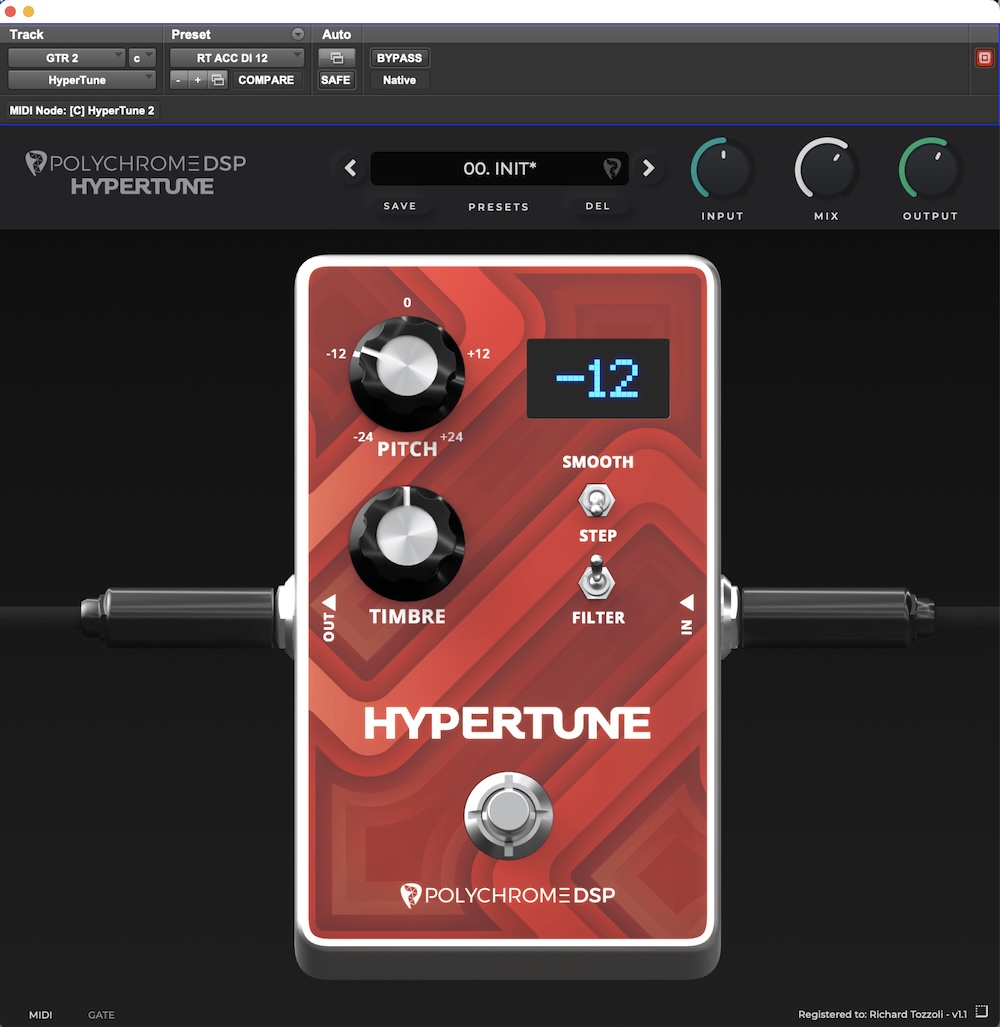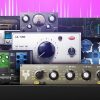-
 play_arrow
play_arrow
Clubalicious Clubalicious Radio
-
 play_arrow
play_arrow
London Calling Podcast Yana Bolder

So many new pro audio and music products are released each year that it becomes difficult to make fair comparisons or put together a “Best Of” or “Top 25” list. How do you choose when presented with a new $10,000 single-channel analog compressor and a $79 distortion plug-in? In that spirit, please consider this our annual “Must-Have” list, where there’s something for every type of audio pro.
To put together this year’s selection, we asked longtime Mix contributors and product reviewers Steve La Cerra, Mike Levine, Rich Tozzoli, Barry Rudolph and Michael Cooper to send in a few of their favorites. Here, presented in alphabetical order, are those selections (Don’t Pass Up Part 1!)
KRK ROKIT 7 GENERATION FIVE

The three KRK ROKIT 7 Generation Five models are, by far, the best iteration yet of the popular KRK powered studio monitor line. The three monitors are differentiated by woofer diameter, cabinet size and maximum SPL—118 dB for the ROKIT 8, the largest model, with an 8-inch woofer. The line includes the compact ROKIT 5 and ROKIT 7 models, both with slightly lower SPL specifications.
The all-metal rear panels have power switch, IEC AC socket for operation anywhere in the world, XLR Combo jack for balanced (XLR) or unbalanced (1/4-inch TS) line-level audio input. There is an amber-colored LCD screen with a single data entry knob to select and adjust all parameters in the DSP software.
All ROKIT Generation Five monitors have three EQ/Voicing Modes—dubbed Mix, Create and Focus—that are optimized for each model. You can also alter a voice to your own preferences by applying an EQ on top of it. For mixing, use the Mix Mode for the flattest frequency response possible. Create Code has a “smiley curve” response and is great for casual, lower-volume listening. Focus Mode is more clinical, with a broad boost at 1 kHz for digging out vocals and other midrange elements within a dense mix. It’s like an audio microscope.
The pair of ROKIT 7s I received for review were solid studio monitors that I now use all the time for checking mixes at lower playback volumes. They would work great for a small Dolby Atmos setup, along with the matching KRK S8.4 Powered Subwoofer. —Barry Rudolph
L-ACOUSTICS XI SERIES

L-Acoustics may have made its mark in touring sound, but it also has a huge presence in installation and integration, as evidenced by the new Xi Series line of coaxial speakers—which debuted with the X6i and X8—that is specifically tailored for short-throw applications. The coaxial technology allows for a compact design that provides tonal balance over distance, while still covering off-axis audiences.
The passive loudspeakers feature a 1.5-inch neodymium compression driver coaxially loaded by a 6- or 8-inch low-frequency transducer in a bass reflex cabinet. Both loudspeakers can be driven by two presets, allowing them to be used in different settings and subwoofer coupling configurations. In their default presets, intended for vocal reinforcement or when used alongside a subwoofer, the X6i has a maximum SPL of 123 dB and a frequency response down to 69 Hz, while the X8i features a maximum SPL of 129 dB and a frequency response down to 67 Hz.
For standalone applications and close proximity listening, the X6i_50 preset delivers sound reproduction down to 54 Hz and produces a maximum SPL of 117 dB. The X8i_40 preset reaches 43 Hz, producing a maximum SPL of 123 dB. The X6i and X8i feature streamlined designs to fit anonymously into architectural settings. The enclosures sport L-Vents to provide low-frequency power and are protected by a weather- resistant IP55-rated surface, making it suitable for indoor and outdoor installations. —Mix Editors
MIDAS HD96-AIR

The HD96-AIR from Midas is a compact digital console that manages to pack all of the features and processing power found in the company’s large-format HD96-24-CC into a lightweight package with a small footprint (32L x 17.5D x 8.5H inches). Like its big brother, the HD96-AIR can route 144 inputs and 123 time-aligned and phase-coherent mix buses at a sample rate of 96 kHz.
Based around a 21-inch, full-color TFT screen with capacitive touch sensing, the base configuration of the HD96-AIR uses on-screen faders in lieu of hardware faders, however the unit can be expanded by adding as many as four Midas HD96-FB16 16-channel fader banks. The HD96-AIR system boasts 24 VCA groups, 24 Population groups, up to 48 assignable 1/3-octave Klark Teknik DN370 graphic EQs, and up to 24 multichannel digital signal processing effects engines(!).
The console supports HyperMAC and AES50 networking, allowing access to as many as 480 inputs and 480 outputs at a sample rate of 96k. Connectivity includes eight local analog XLR I/O, two HyperMac on EtherCon XLR, two HyperMac on Opticon XLR, word clock I/O, Ethernet and two expansion slots.
Audio processing includes dual-slope high- and low-pass filters, 4-band parametric EQ with three shelf modes, 4-mode creative input compressors, gates, insert point on/off with processing order change, direct output with adjustable level and processing pick-off point, and delay-compensated aux return mode on inputs.
What’s really intriguing about the HD96-AIR is that it’s small and light enough to be checked as airline baggage but doesn’t compromise the channel count or processing power, which will enable mid-level tours doing fly dates to travel with a full-featured console. Midas has yet to announce the cost, but rumor is that the HD96-AIR will be priced significantly lower than the HD96-24-CC. —Steve La Cerra
POLYCHROME DSP HYPERTUNE

Sometimes simpler is better—especially when it’s this good. Polychrome DSP Hypertune is a transposer/octave plug-in pedal with two knobs and two switches. The Pitch knob sets the pitch from -24 to +24, offering two octaves in either direction. The Timbre knob adds adjustment to the bass and treble frequencies. By flipping the small switch up from Step, which changes in semitone increments to Smooth, you get continuous pitch changing, which is useful for micro-tuning shifts. The Filter switch removes low and high frequencies from the signal that is transposed, which is best on octave work.
It also has full MIDI control, allowing you to map the controls to your MIDI controller pedal and additional MIDI routing. At the top of the GUI you have Input, Mix and Output knobs next to a drop down presets menu. The Mix knob is highly useful, allowing for the perfect blending of signals when used directly on a track, or full bore when used on an aux. The dropdown menu will get you started with such presets as 12-String, Octave Up, Sub Octaver and The Animal.
Aside from the super-fast tracking, it can handle chords on guitar, which is a rarity for pitch pedals. Also, the quality of the pitch is obvious, and it can take you in some super-cool creative places.
As a fan of layering elements to make big tracks, I’ve found a number of uses for just such a purpose. Aside from putting rocking electric tracks down an octave (-12 Pitch) to add depth and growl, I added the direct signal of my acoustic the other day, pitching it down an octave and blending with the mic. It made for a very cool 12-string sound. Also, I use it on background vocals and underneath my Oberheim OB8 for a monster sound. Love this thing! Oh, and it’s only $49! —Richard Tozzoli
RHODES V-RACK

The Rhodes V-Rack isn’t just another multi-effects plug-in. It’s populated with the analog-modeled effects from the effects section of the Rhodes MK-8 piano. And the versatile V-Rack is not just for electric pianos; it’s designed to be used with any source type. It sounds excellent.
Its horizontal GUI features seven modular processors, providing users with a versatile effects toolkit. Each effect can be individually turned on and off, and the main controls can be augmented by pressing a button to reveal “Extended” parameters in a row underneath.
The Drive circuit provides everything from a bit of warmth to over-the-top distortion. It’s one of two effects in the V-Rack—the other is the Compressor— that can be moved from a pre to a post position relative to the other effects in the signal chain. The EQ features Low and High bands that each have a boost/ cut knob and three frequency choices. A variable Mid-band and filter section (Peak, Band Pass, High Pass and Low Pass) featuring Resonance and Envelope sliders round out its controls.
The most characteristic “Rhodes” effect is Vari-Pan. On a stereo or mono- to-stereo instance of the plug-in, it provides an auto-pan effect that can go from slow and subtle to super-fast and crazy, and be synced to the host tempo if desired. The VCA compressor features a complete set of controls, including Threshold, Attack, Release, Dry/Wet and Makeup Gain. It even provides a sidechain input.
Then, there are separate and powerful Chorus and Phaser modules. The last effect in the chain is Delay, which, in addition to standard delay parameters, offers options for saturating and EQing the delayed signal. —Mike Levine
COME BACK TOMORROW FOR PART 3!
Written by: Admin
Similar posts
Recent Comments
No comments to show.Featured post

Latest posts
Current show
Upcoming shows

Made To Move
Jacob Colon
19:00 - 20:00
In Session
Sister Bliss
20:00 - 21:00
Fresh Is Fresh
This Weeks Hottest Releases
21:00 - 00:00
Uplifting Only
Ori Uplift
00:00 - 02:00
Fresh Is Fresh
This Weeks Hottest Releases
02:00 - 09:00Chart
Powered by Dee jay promotions visit us













 Invalid license, for more info click here
Invalid license, for more info click here